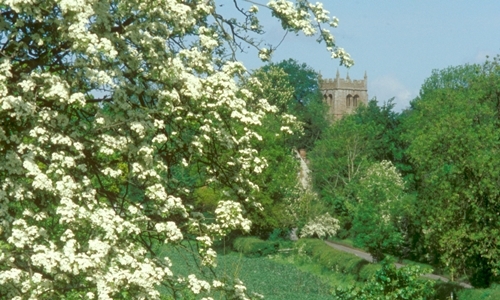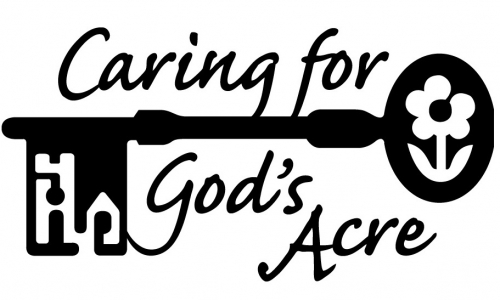| Caring for God's Acre | |
| Sherbourne Valley Project |

Become a Care of Creation Champion for your Parish or a Deanery Environmental Representative
It would be good if every parish could appoint someone who would take responsibility for the Fifth Mark of Mission of the Anglican Communion in their parish ('To strive to safeguard the integrity of creation, and sustain and renew the life of the earth'). The Diocesan Environment Group have suggested how this might be done; see 'Role of Care of Creation Champions' in the documents in the right hand panel. If you wish to make an even greater impact, consider becoming a Deanery Environmental Representative.
Care of Creation Champions: Following loss of the data from the original Care of Creation Champions scheme, we restarted this initiative to help develop and assist our churches to inspire and encourage God’s people to engage in caring for creation, particularly through the Eco Church scheme. We hope that Care of Creation Champions will create networks of people in deaneries and parishes who will encourage their congregations and who will also act as links with the Diocesan Environment Group.
A Care of Creation Champion should be appointed by the local PCC to promote care of creation within the parish:
- To act as a link between the parish, the Deanery Environmental Representative and the Diocesan Environment Group
- To pass on links to relevant resources and events to the parish
- To encourage their church to submit their annual data using the Energy Footprint Tool with their Parish Returns
- To encourage the parish to join up to Eco Church in order to promote caring for God’s earth in:
- Worship and teaching
- Environmentally responsible use of church buildings
- Environmentally responsible use of church land
- Community engagement in environmental issues
- More environmentally friendly lifestyles of individuals
If you have previously signed up to be a Care of Creation Champion or would like to sign up to become one, please contact the Chairman of the DEG, Godfrey Armitage on Godfrey.Armitage@coventry.anglican.org.
The overarching initiative the DEG is supporting is the Eco Church project. Eco Church is an A Rocha UK award scheme for churches in England and Wales who want to demonstrate that the gospel is good news for God’s Earth. This programme will help us to address the challenges the Diocese set ourselves in our Diocesan Environmental Statement in 2009. To celebrate the Centenary of the Diocese of Coventry in 2018, the Diocese registered as an Eco Diocese and we are working towards a Bronze Award here.
To find out more about the Eco-Church project and to sign your church up, visit their website - http://ecochurch.arocha.org.uk/. Could you coordinate your church's Eco Church programme. Try out the Eco Survey, click HERE to download it and to see how well your church is doing. You might then want, with your incumbent's permission and PCC's agreement, to join the scheme.
Click here to return to the top

Above: A bird-box building tean at St Andrew's, Eastern Green
How could you help your church to improve the biodiversity of its churchyard? In many urban areas the churchyard is the only green area in the community and in rural areas the churchyard can often be the only area of open land that has been untouched by chemical fertilizers. Therefore, the variety of plant and animal life in churchyards can be great if they are managed in such a way as to celebrate the diversity of life.
However, do be aware that there can be conflict between those who wish to retain the churchyard as a tidy place of memorial and contemplation and those who wish to encourage wildlife. In response to this, the Diocesan Environment Group, in consultation with the Chancellor and Diocesan authorities have produced a Biodiversity Policy Statement which recognises churchyards as first and foremost spiritual places, places of solace and memorials, but which also have a role in enhancing God's creation.
To cut fuel costs and create a rich haven for wildlife the DEG advises leaving certain areas of the churchyard to be cut, and grass removed, once in the summer and, if needed, once again in October. Perhaps you could take part in a wildlife survey of cut areas and of more lightly managed areas; some churches put up notices showing what species are present.
Some churches have raised beds to make an edible border; you could grow tomatoes, courgettes and beans for anyone to pick or for the church to use when we are able to meet again to share meals in church gatherings. Or they can be used to teach young people gardening skills.
In Coventry diocese, the churchyard of St Mary’s in Oldberrow is a perfect example of old unimproved neutral grassland. An annual ‘Wildflower Weekend’ is held at the church to inform visitors of the biodiversity of the churchyard and the churchyard hay cut is often a community event. Seeds from recent hay cuts at Oldberrow have been used to create new areas of biodiverse grassland. In 2017, 2018 and 2019 a number of churches took part in Cherishing Churchyards Month in June. Needless to say, this was not possible in 2020. In 2021, a number of churches joined with Churches Count on Nature.
And for more information on churchyard management visit - https://www.caringforgodsacre.org.uk/resources/action-pack/
Click here to return to the top

Caring for God’s Acre is a non-religious Charity dedicated to conserving and celebrating burial grounds and encouraging a holistic approach to management. As well as being a place for people, burial grounds can also be a haven for wildlife.
Click here to be connected to this campaign.
Sherbourne Valley Churches
The Sherbourne Valley Project completed its development phase, during which the Diocesan Environment Group was represented on the SVP Board as 'The Diocese of Coventry' by the Diocesan Environment Officer. The group was reconstituted in May 2022 as 'Sherbourne Valley Churches' and the place on the Board is taken by Jan Clemons (Hearsall Baptist Church) who has been actively and practically involved. We hope that we and more churches will work together with Warwickshire Wildlife Trust to enhance the area for the benefit of wildlife and people, helping people to improve, interpret, share and celebrate all aspects of the river’s heritage, to be a blessing on God’s creation. Please contact the Diocesan Environment Officer (Godfrey.Armitage@coventry.anglican.org) if you would like to know more about this project.
History of our involvement
Coventry is the City of Culture in 2021/2022. In connection with this exciting project the Diocese of Coventry Environment Group (DEG) met with the Warwickshire Wildlife Trust (WWT) in 2018 with a view to getting involved, in a supportive role, with a project to enhance the River Sherbourne and to provide opportunities for local people to help with this. It is hoped that residents of communities in the river valley would be able to become involved in the river's conservation and protection, and that they could support WWT's work in enhancing the river's biodiversity. This in turn should involve many opportunities for community engagement with all the mutual support and co-operation which that implies. In the City itself, the river is culverted in various places, and it is planned to open it up at key locations.
The River Sherbourne and its tributaries run through 14 Church of England parishes[1], 3 of which are registered as Eco churches; there are also three other churches which are registered as Eco Churches in the Diocese, Warwick Road URC, West Orchard URC and Hearsall Baptist Church.
The DEG agreed that it would be a great idea to encourage parishes and church communities in the watershed of the Sherbourne to become involved in supporting this project to care for their local environment. For those who are signed up to Eco Church, like Coventry Cathedral, this is an expression of one of the assessed categories, ‘Global and Community Engagement’, particularly working together on the project with other denominations in the area. Even for those who are not registered with Eco Church (do consider signing up!), this provides a good framework for Christians to be a blessing in their local communities and environments, whether by encouraging local people to walk the banks of the river and its headwaters, litter-picking, reporting pollution, encouraging wildlife or becoming involved in a more committed way as expressed below.
The WWT made a grant application for funding from the National Lottery Heritage Fund (NLHF) for the Development Phase and several individuals, on behalf of the DEG, gave £500 to provide some cash match for the Development Phase to support the project staff time (the Community Engagement Officer). This provided capacity for the staff to work with the Diocese of Coventry to explore opportunities of how to engage local people in events and engagement activities for the Delivery Phase. The delivery phase of the project is about to start and individuals who support the project are donating another £500 towards matched funding.
Ian Jelley who is coordinating the project for the WWT has made the following points in which parishes could be involved in the project:
1. Each parish church that is interested mapping out the route of the River Sherbourne in their parish, highlighting existing wildlife/heritage value and opportunities for enhancement, along with negative factors such as pollution that could be addressed as part of the scheme.
2. Each parish church that is interested helping to disseminate information on scheme including training events, activities and volunteering opportunities that people can get involved with.
3. Parish churches with appropriate facilities acting as potential venues within the river catchment for meeting and training events.
4. Identifying positive legacy elements from the scheme such as training in the restoration of built heritage or best practice management of green spaces for wildlife that church groups or individuals could benefit from beyond the life of the NLHF funding.
[1] CofE churches in the watershed: St Andrew's, Eastern Green; St Christopher, Allesley Park and Whoberley; All Saints, Allesley; St Laurence, Meriden; Corley Church; St Thomas, Keresley with Coundon; St George, Coventry; St Mary Magdalen, Coventry; St John, Coventry; Holy Trinity, Coventry; Coventry Cathedral; St Peter, Coventry; All Saints, Coventry; St James, Whitley.
Click here to return to the top